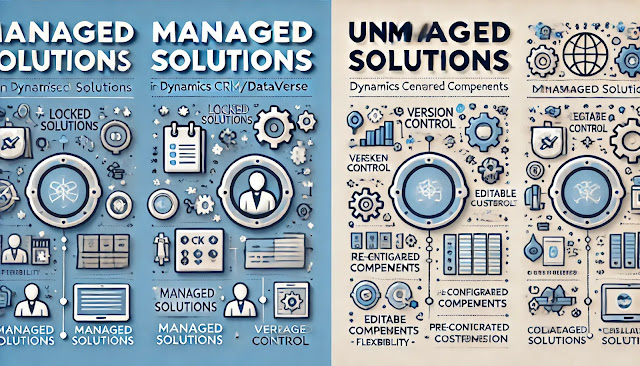Quick View Forms: The Secret Weapon in Dataverse UX
In the world of Microsoft Dataverse and Dynamics 365, delivering seamless, user-friendly experiences is no longer optional—it’s essential. One often-overlooked feature that quietly transforms how users interact with data is the Quick View Form.
Quick View Forms are like the Swiss Army knife of model-driven apps. They empower makers and architects to surface related data contextually, keeping users informed without overwhelming them. But why are they such a game changer? Let’s break it down.
What Are Quick View Forms?
A Quick View Form lets you embed a subset of fields from a related table (entity) directly into the main form of another table.
Imagine this:
When a user opens a Case, they instantly see key Account details—like Primary Contact, Credit Limit, and Account Status—without ever leaving the Case form.
It’s read-only, lightweight, and perfect for displaying critical information from related records.
Why Quick View Forms Are Game Changers
How Quick View Forms Work (Technical Deep Dive)
Relationship Based Rendering
- Works with N:1 (many-to-one) or 1:1 relationships.
Example: Contact → Account (many contacts belong to one account).
Read-Only UI Element
- Displays data but doesn’t allow editing directly from Quick View.
Business Rules Support
- Fields in Quick View forms can participate in form-level Business Rules.
Security Model Compliance
- Respects Dataverse’s role-based security, meaning users see only what they’re allowed.
Step-by-Step: Adding a Quick View Form
- Go to Solution > Tables > Forms in Power Apps Maker portal.
- Create a new Quick View Form in the related table (e.g., Account).
- Add desired fields, save, and publish.
- Open the target table’s form designer (e.g., Case).
- Insert Quick View Form control and select the lookup field (e.g., Customer).
- Choose your published Quick View Form.
- Save and publish.
✅ That’s it—users now see related data on the form.
Limitations to Watch Out For
Developer & Architect Perspectives
Developer View
- Eliminates need for fetchXml or Web API calls in JavaScript to pull parent data.
- Reduces custom plugins for simple data visibility requirements.
Architect View
- Encourages “Context First” design by bringing relational data together.
- Helps maintain clean, modular app architectures.
- Perfect for ALM pipelines because configurations are solution-aware.
Why You Should Start Using It
- Speeds up user workflows
- Keeps forms clean and lightweight
- Reduces support tickets (users don’t have to navigate across forms)
- Makes Dataverse apps feel “smarter” and more context-aware
Final Thoughts
Quick View Forms may look simple, but they pack a punch when it comes to enhancing user experience in Dataverse. For developers, they eliminate unnecessary API calls; for architects, they drive clean design; and for end users, they provide instant clarity.
So, the next time you’re building or enhancing a model-driven app, ask yourself
It’s a small feature that delivers big wins.







Comments
Post a Comment